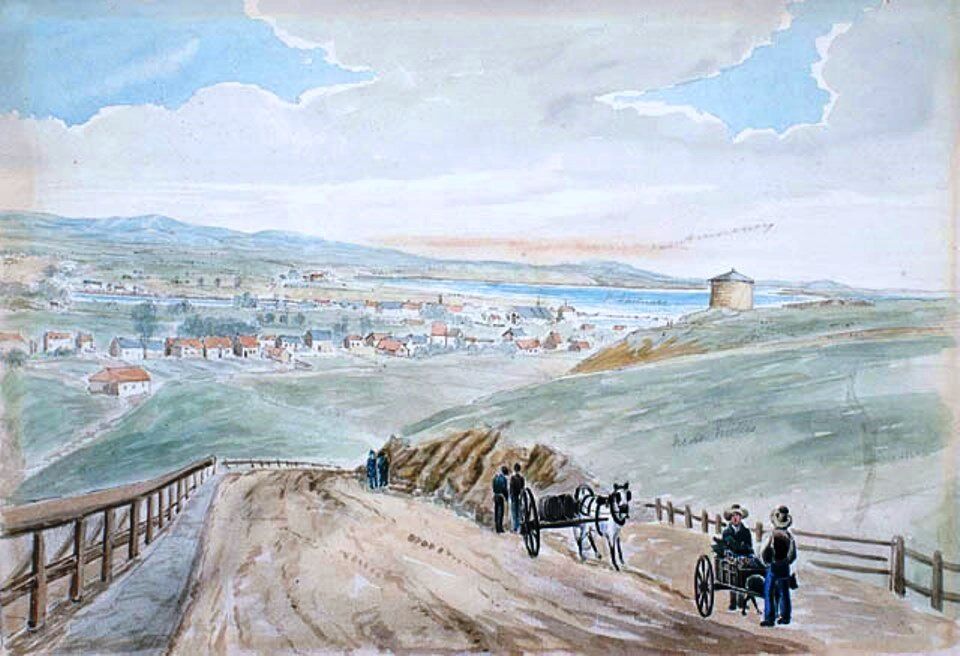In the 19th century, the economies of both Canadas were growing and diversifying. The timber trade was thriving, and protectionist policies had created a domestic market. This economic development led to building more efficient transport infrastructures. As capital was accumulated within the colony, it became essential to establish financial institutions.
Capital is the property or money owned by a person, company or country. Capital can be used to make investments.
Roads and bridges had to be built in both Canadas due to the ever-increasing population and the growing number of villages. For example, roads were essential for the Loyalists to settle the Eastern Townships. These roads also helped develop trade within the colony.
In 1815, the colonial authorities built the royal roads (long roads connecting large cities), while the municipalities handled the small country roads.

Rural road around 1830, currently Avenue de Salaberry in Quebec City
Nevertheless, roads and bridges alone could not support the economic development of the colonies. Canals and railroads were built in response to the need for faster and more efficient transport infrastructure.
In the 19th century, waterways were still the most popular way of transporting goods. However, rapids in a section of the St. Lawrence River south of the Island of Montreal made crossing difficult. Rapids were a common feature of many rivers in Lower Canada, making them difficult to navigate.

A boat attempting to cross the Lachine Rapids
Because the rapids were causing goods to be lost and they were very difficult to bypass, merchants were keen to encourage the colonial authorities to improve the maritime network by building canals and locks.
A canal is an artificial waterway created to make navigation easier. Canals often have locks, which allow boats to pass from one water level to another. The image below shows how a boat moves from a high level to a lower level.

Lowering lock
In 1825, the Lachine Canal was commissioned and made it possible to get around the Lachine Rapids. In addition to connecting Lower Canada and Upper Canada, the canal gave Montreal the opportunity to trade with the Great Lakes region. More canals were eventually built, allowing trade between Quebec, Montreal and the United States to flourish.

Current photo of the Lachine Canal
The introduction of railroads marked a new beginning in transportation because they allowed goods to travel year-round, unlike waterways which freeze up in the winter.
The first railroad line began operating in 1836. It linked the village of La Prairie to Saint-Jean-sur-Richelieu, providing access to the United States. As such, railroads also contributed to the colony’s economic development.
During this time, banks became necessary in both Canadas. Several different foreign currencies were in circulation within the colony, which made financial transactions complicated. Banks would issue paper money to replace the various gold and silver currencies.

The Bank of Montreal today
Banks also provided an opportunity to accumulate capital, which could then be lent to customers, for an interest fee. As merchants made increasingly large investments, such as financing a canal, credit (money advanced as a loan) became important, since it granted merchants the money they needed to complete their transactions. Banks were also directly involved in the construction of transportation infrastructure.
The Bank of Montreal was founded in 1817, and the Bank of Quebec was founded the following year.